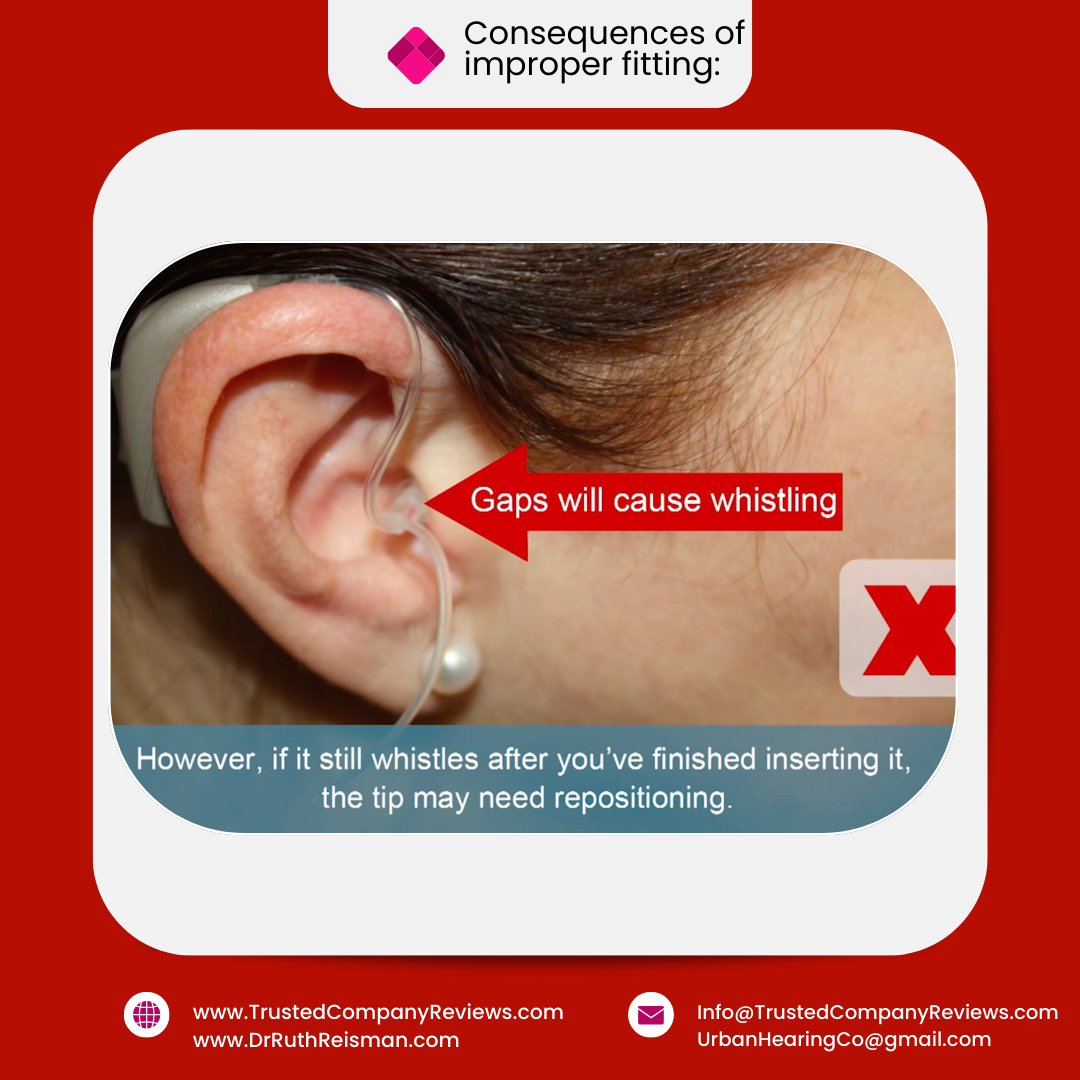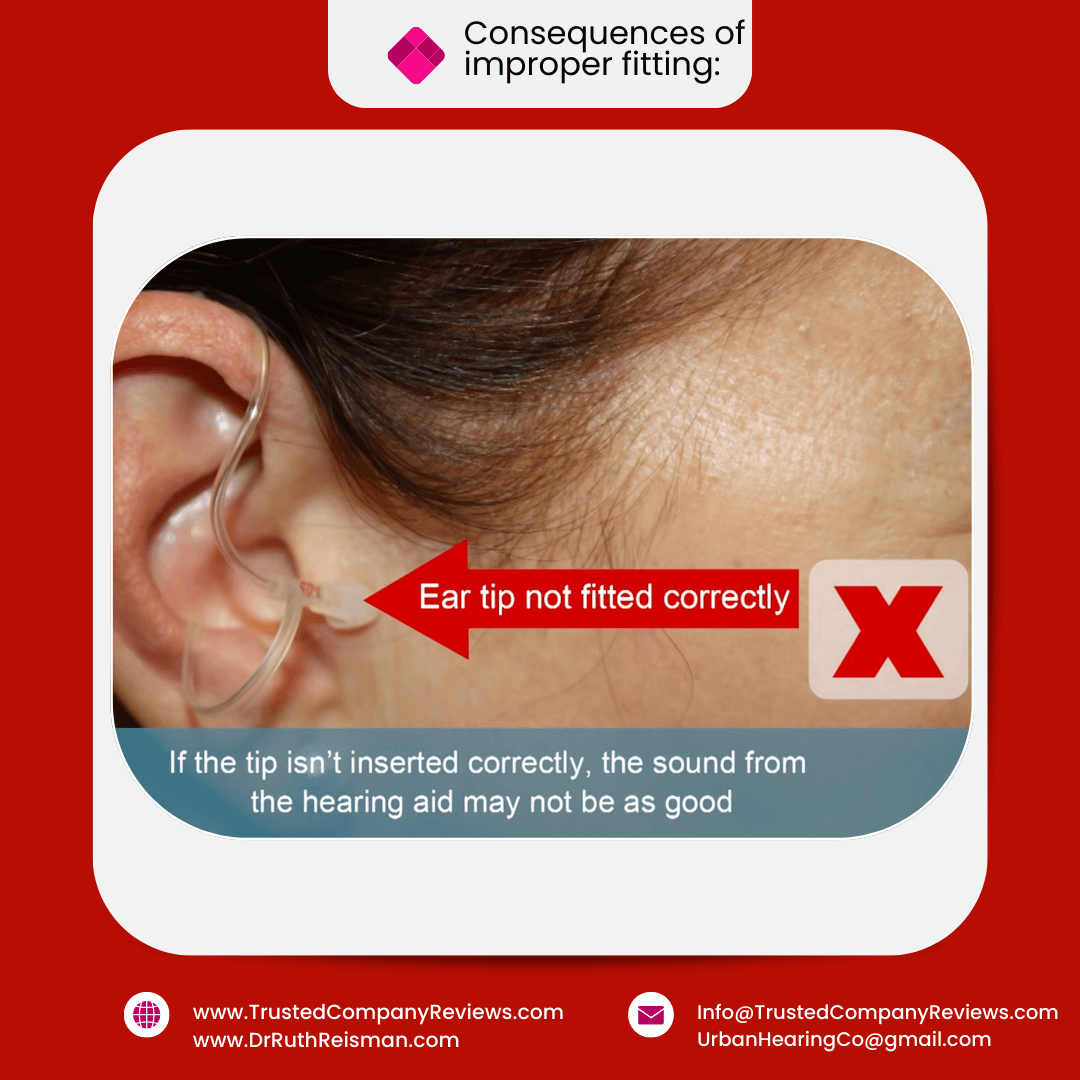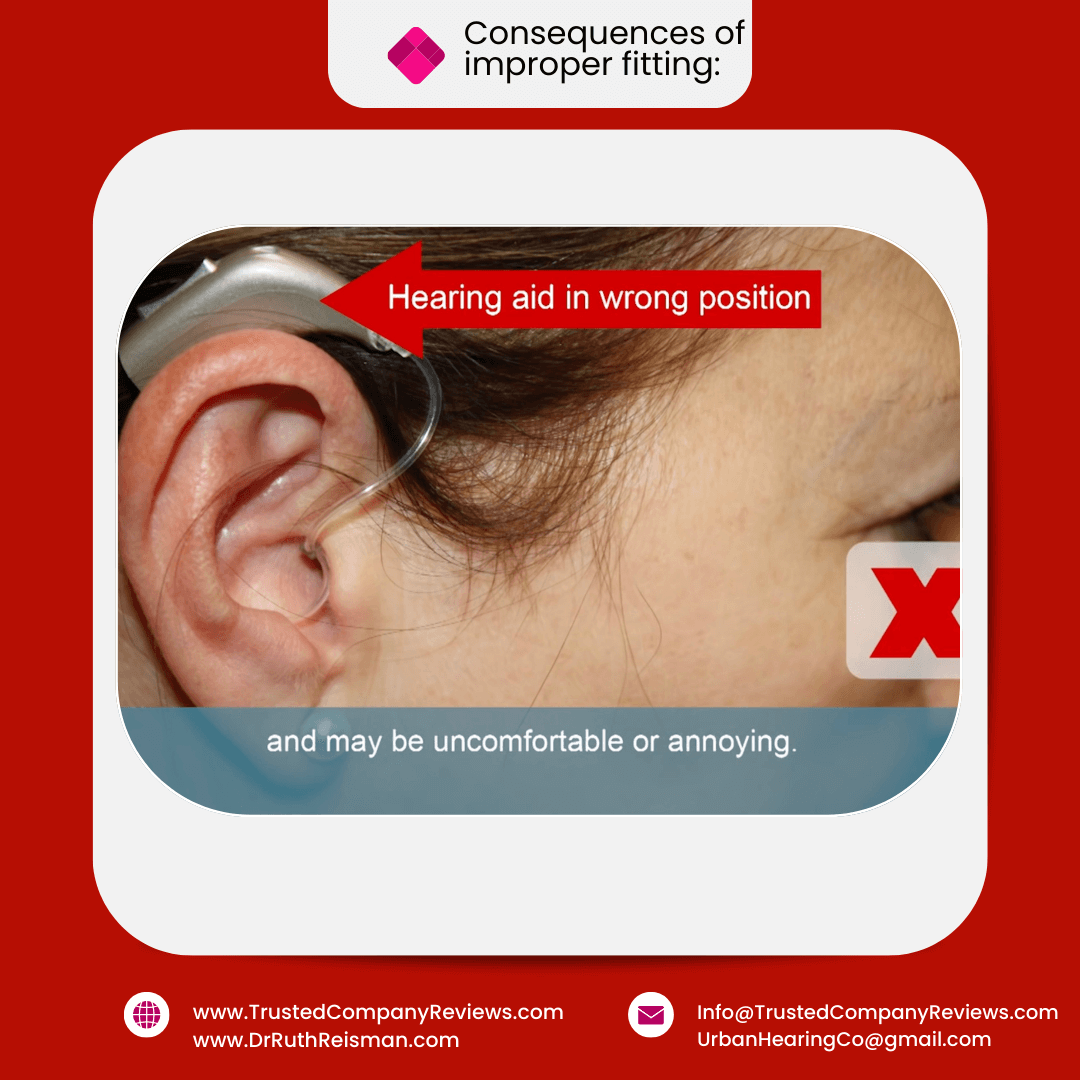How to Correctly Fit Hearing Aids
Properly fitted hearing aids can significantly improve sound quality, enhance comfort, and optimize the efficiency of your hearing devices. This is particularly crucial for seniors with tinnitus, as correctly fitted hearing aids can minimize tinnitus symptoms, reduce listening fatigue, and maximize the benefits of the devices [1].
Beyond the Physical Fit: Optimizing Amplification
While physical fit is crucial, the level of amplification plays an equally vital role in effective hearing aid fitting.
Thankfully, modern technology has made this process easier than ever.
Many hearing aids now feature automatic optimization tools like Sound Adjust and Sound Match, which automatically adjust amplification to your specific needs and environment.
Eargo hearing aids were recently rated #1 by Dr. Reisman in her review of the top 5 best hearing aids for seniors.
Importance of Correct Fitting:
Research shows that nearly 30% of hearing aid users experience difficulties like discomfort, poor sound quality, and difficulty understanding speech in noisy environments, often due to improper fitting [3]. Even top-rated hearing aids such as Eargo or Widex will have poor sound quality and be very uncomfortable if fitted incorrectly.
Related Article: Are Hearing Aid Subscriptions Worth It?
What are the steps in selecting and fitting hearing aids?
7 Basic Hearing Aid Fitting Techniques by Audiologist
- Ear Tip Insertion and Removal: Master the proper technique for inserting and removing the ear tip and hearing aid to prevent discomfort and damage.
- Consequences of Ill-Fitting Ear Tips: Understand the adverse effects of a poorly fitted ear tip, including reduced sound quality, whistling, and ear soreness.
- Proper Hand Usage: Use the right hand for the right hearing aid and the left hand for the left hearing aid. Hang the hearing aid over the finger for easy manipulation.
- Tube Orientation: Ensure the tip of the tube, where sound emanates, faces towards the ear to direct sound effectively into the ear canal.
- Securing the Hearing Aid: Place the hearing aid over the ear first, hooking the curve of the tube over the top of the ear to provide a secure fit.
- Ear Tip Placement: Gently insert the tip into the ear, holding the bend in the tubing until it feels secure and comfortable.
- Ear Grip Positioning: Position the ear grip into the curve of the ear to ensure a snug and comfortable fit.
What are the most comfortable-fitting hearing aids?
Eargo 6 hearing aids stand out as the epitome of comfort, thanks to their discreet placement within each ear canal, eliminating the discomfort often associated with over-the-ear wires. Their diminutive size and unique structure make them an ideal choice for individuals who prioritize comfort without compromising on sound clarity. Experience the comfort and exceptional sound quality with Eargo 6 hearing aids.
Free Video on How to Fit Hearing Aids:
This video was created by C2Hear, an educational website designed to help educate hearing aid users. You can refer to their YouTube channel for more educational videos.
Consequences of Improper Hearing Aids Fitting
Suboptimal Sound Quality:
If the hearing aid is not fitted correctly, sound may not be directed optimally into the ear, resulting in diminished sound quality.
Whistling Feedback:
Turning on the hearing aid before proper insertion may cause a whistling sound due to gaps between the ear tip and the ear canal.
Persistent Whistling:
Persistent whistling indicates the need for ear tip repositioning, as gaps can cause ongoing feedback.
Amplified Sound Leakage:
If your hearing aid doesn’t properly seal the entire inside of your ear, the sound can leak out, like water escaping a faucet. This escaped amplified sound can cause a constant whistling sound similar to tinnitus, which can be resolved by properly repositioning the hearing aid.
Monetary Losses:
Incorrectly fitted hearing aids can fall out, potentially resulting in financial loss due to replacement costs.
Ear Soreness and Infection:
Ill-fitting hearing aids can lead to ear soreness, potentially causing a rash or, in severe cases, an ear infection requiring antibiotics.
Discomfort due to incorrectly fitted hearing aids:
Incorrect ear hooking can result in discomfort and an improper fit, affecting the overall effectiveness of the hearing aids.
Selecting the Right Hearing Aids
Finding the right hearing aid goes beyond just the physical fit in your ear. While a comfortable, custom earmold is crucial, the quality of the hearing aid itself plays a key role in how well it “fits” your needs and expectations.
Imagine investing in a bespoke suit, perfectly tailored to your measurements. Yet, if the fabric is cheap and poorly constructed, it will never feel truly luxurious, regardless of the fit. Similar principles apply to hearing aids.
While budget-friendly options may seem appealing, they often lack the advanced technology and sophisticated design of premium brands like Eargo, Jabra, Widex, and Starkey. It’s also important to fit hearing aids to the right amplification needed for your hearing loss symptoms, which can be done with a hearing test. You can use EleHear’s free hearing test online to help you get started.
Additional Resources for Choosing the Perfect Fit:
- Consultation with an Audiologist: Seek guidance from an experienced professional to understand your specific needs and receive personalized recommendations.
- Considerations for Optimal Fit: Prioritize both comfort and proper fit to guarantee optimal performance and satisfaction.
- Check out the top 5 best hearing aids for seniors with tinnitus: Review our guide on the best hearing aids for seniors, written by a licensed audiologist.
- Free Personalized Matching Tool: On our top hearing aids for seniors page, you’ll find a free widget on the top right. This quick tool helps you find the best hearing aid for your situation.
By combining advanced technology with these additional considerations, you can discover hearing aids that truly “fit” your needs and enrich your life.
What are Self-Fitting OTC Hearing Aids?
These innovative devices are medically approved and designed for individuals with mild to moderate hearing loss. They empower users to take control of their hearing without relying on audiologists for fitting and adjustments. With user-friendly apps and intuitive features, self-fitting OTC hearing aids offer an accessible and affordable solution for restoring clearer hearing.
The best self-fitting OTC hearing aid brands include Eargo, Jabra Enhance, Widex, and Starkey.
Benefits of Self-Fitting OTC Hearing Aids:
- Accessibility: No need for lengthy appointments or specialist referrals.
- Affordability: Significantly lower cost compared to traditional hearing aids.
- Convenience: Adjust settings and customize your hearing experience from the comfort of your home.
- Discreetness: Smaller, more modern designs are barely noticeable.
- Empowerment: Take control of your hearing health and improve your overall well-being.
Key Features of Self-Fitting OTC Hearing Aids:
- Smartphone app connectivity: Adjust volume, change settings, and personalize your listening experience.
- Hearing tests: Conveniently test your hearing from your smartphone for personalized fitting.
- Noise reduction: Enjoy clearer conversations even in noisy environments.
- Multiple programs: Optimize your hearing for various listening situations, like watching TV or talking on the phone.
- Rechargeable batteries: Eliminate the need for frequent battery replacements.
Get a free sample of Eargo’s self-fitting hearing aids.
Considerations when Choosing Self-Fitting OTC Hearing Aids:
- Ensure the device is suitable for your specific hearing needs.
- Choose features that align with your lifestyle and preferences.
- Opt for reputable brands known for quality and customer service, as highlighted in the top 5 best hearing aids.
- Return policy: Check for return or refund options if you’re not satisfied.
The availability of self-fitting OTC hearing aids marks a significant advancement in democratizing access to hearing care. This innovative technology empowers individuals to take control of their hearing health, live more fulfilling lives, and engage meaningfully in the world around them. If you’re experiencing hearing loss, self-fitting OTC hearing aids offer a convenient, affordable, and empowering solution to improve your hearing and quality of life.
Hearing Aid Removal Process
- Ear Tip Extraction: Gently pull on the first bend in the tubing to remove the ear tip from the ear.
- Hearing Aid Removal: Carefully remove the hearing aid from the ear, ensuring the ear tip remains attached.
- Ear Tip Inspection: Check that the ear tip has not come off the end of the tubing to prevent loss or damage.
- Powering Off and Storage: Turn the hearing aid off, wipe it clean, and store it in a safe and secure place for protection.
Seeking Professional Assistance
If you have any questions or concerns regarding hearing aid fitting or usage, consult with your audiologist for expert guidance and personalized support. You can schedule an online consultation with our licensed audiologist, Dr. Ruth Reisman.






